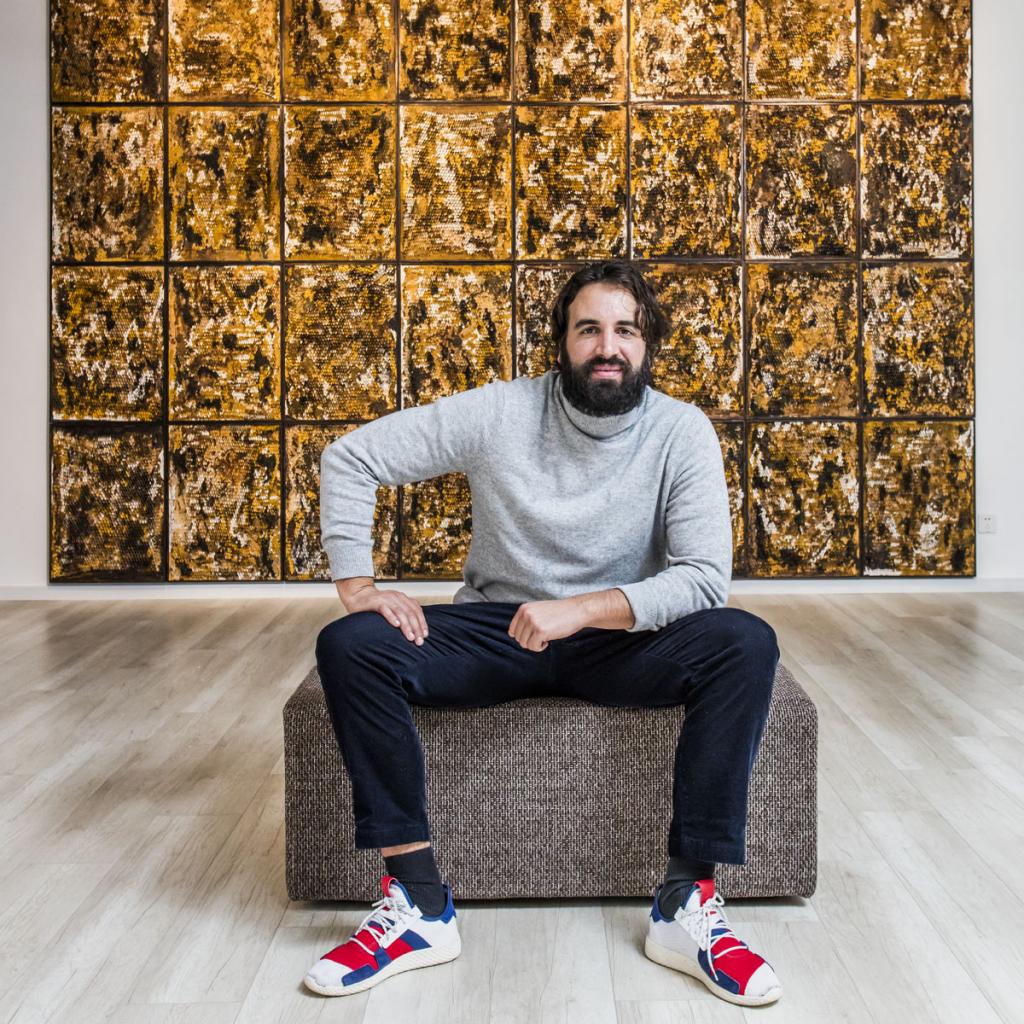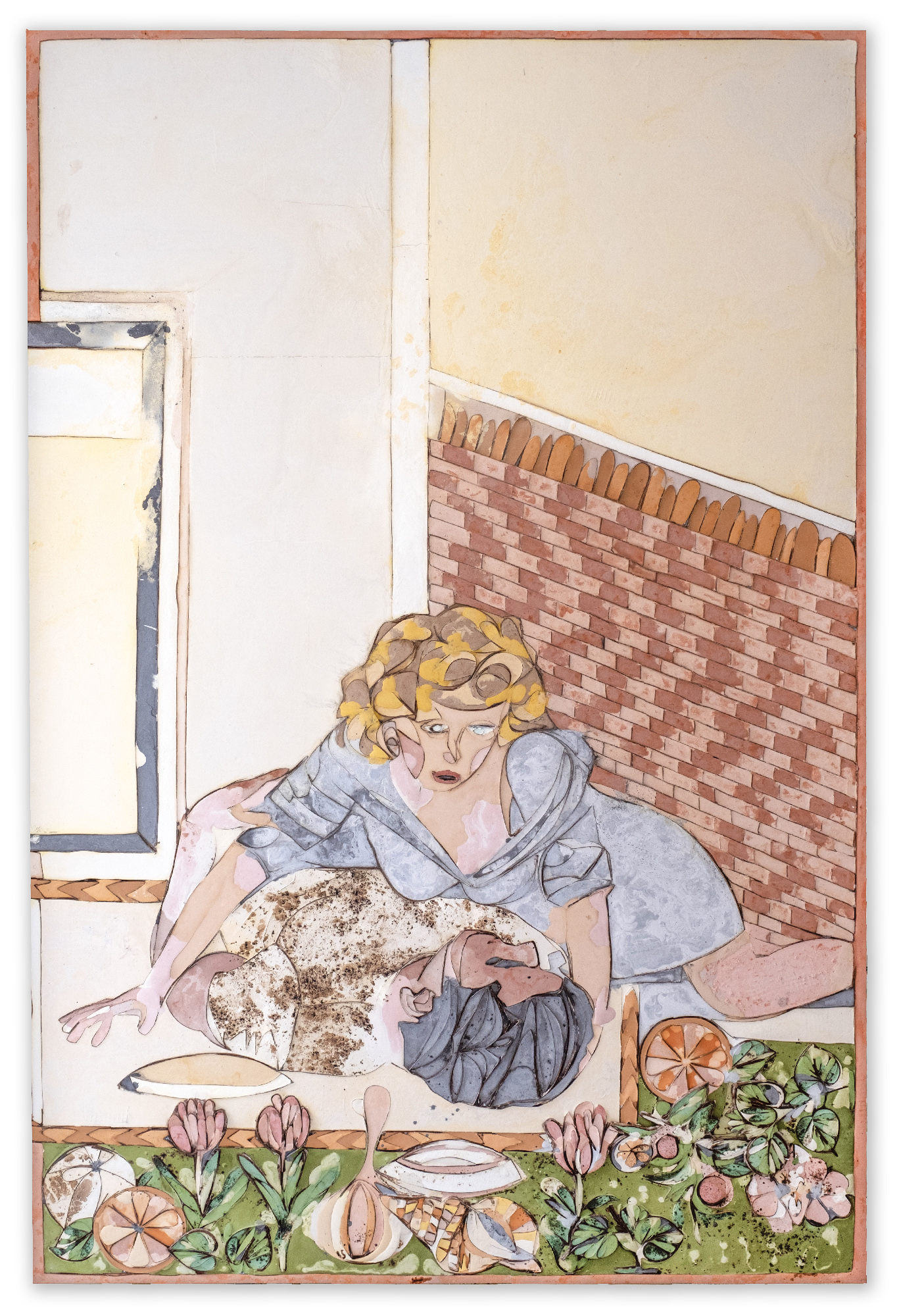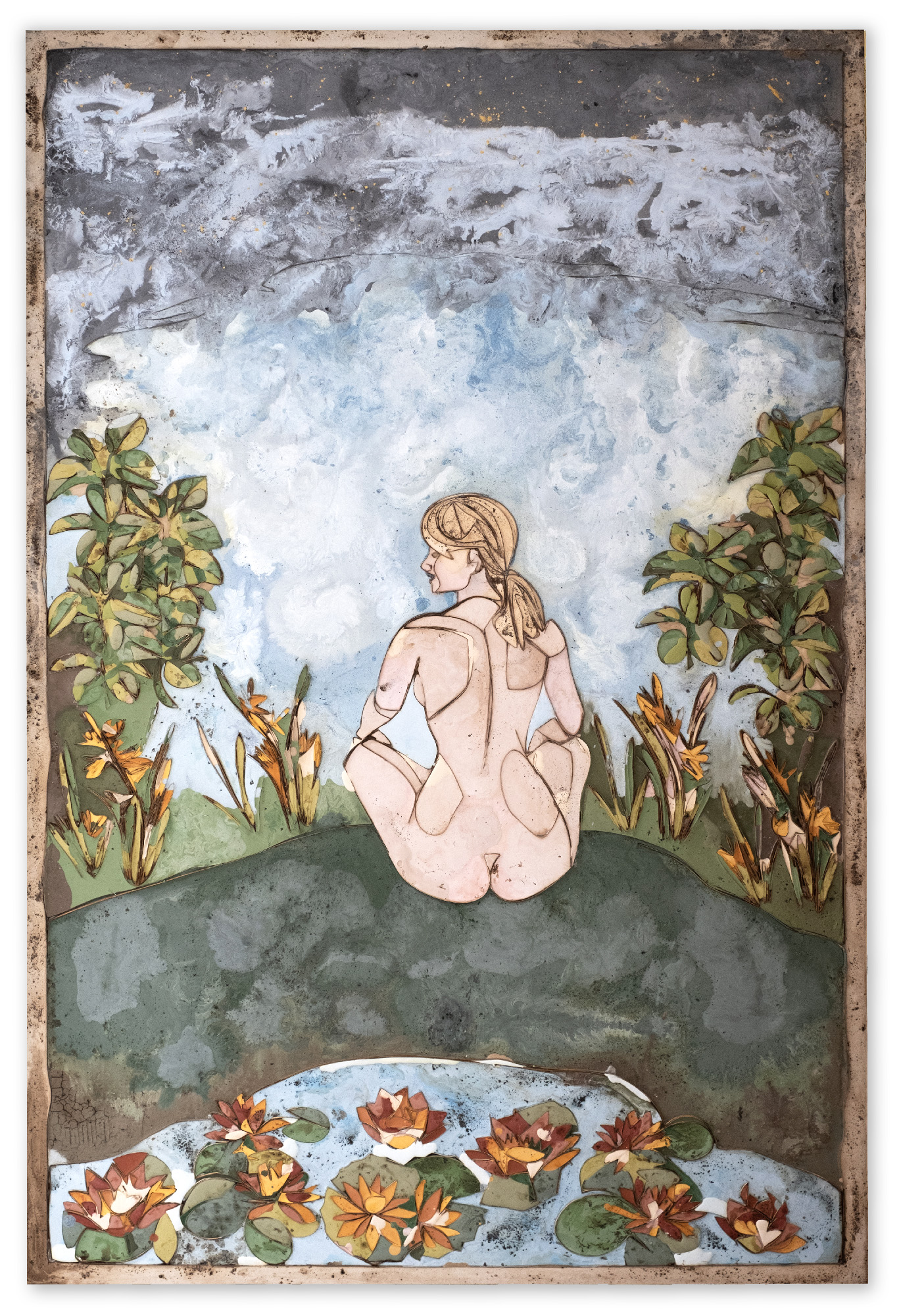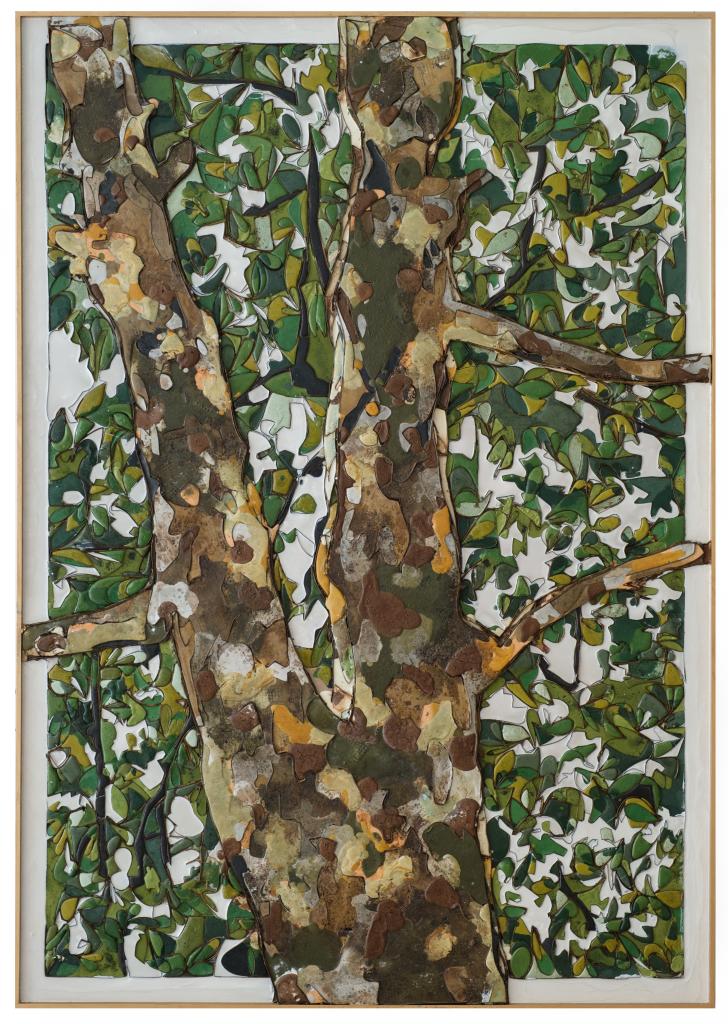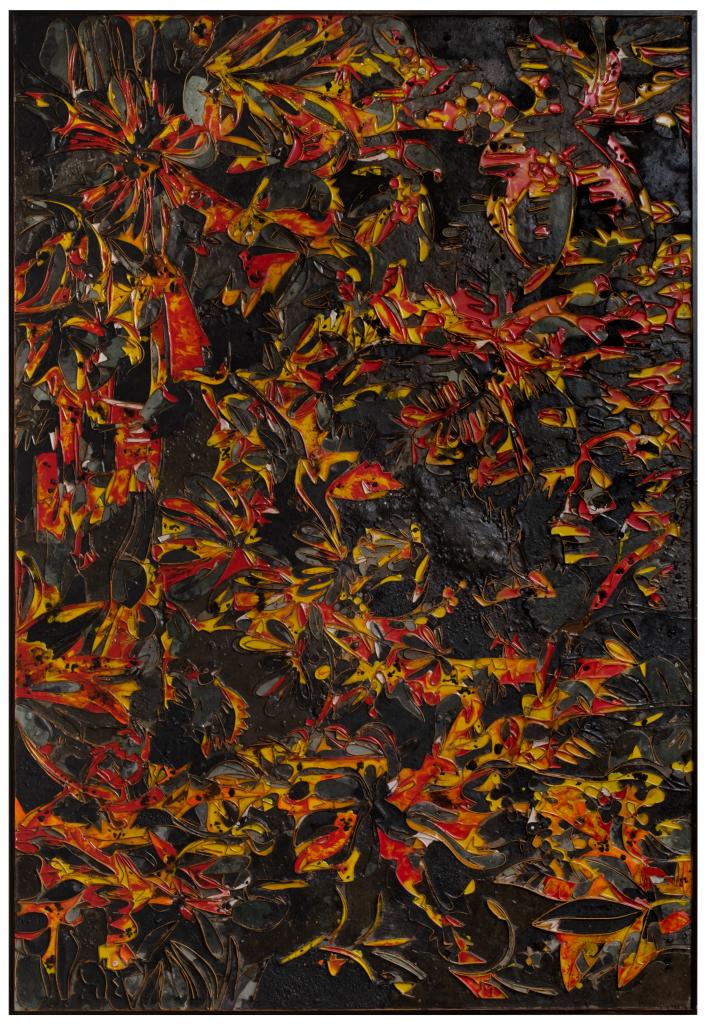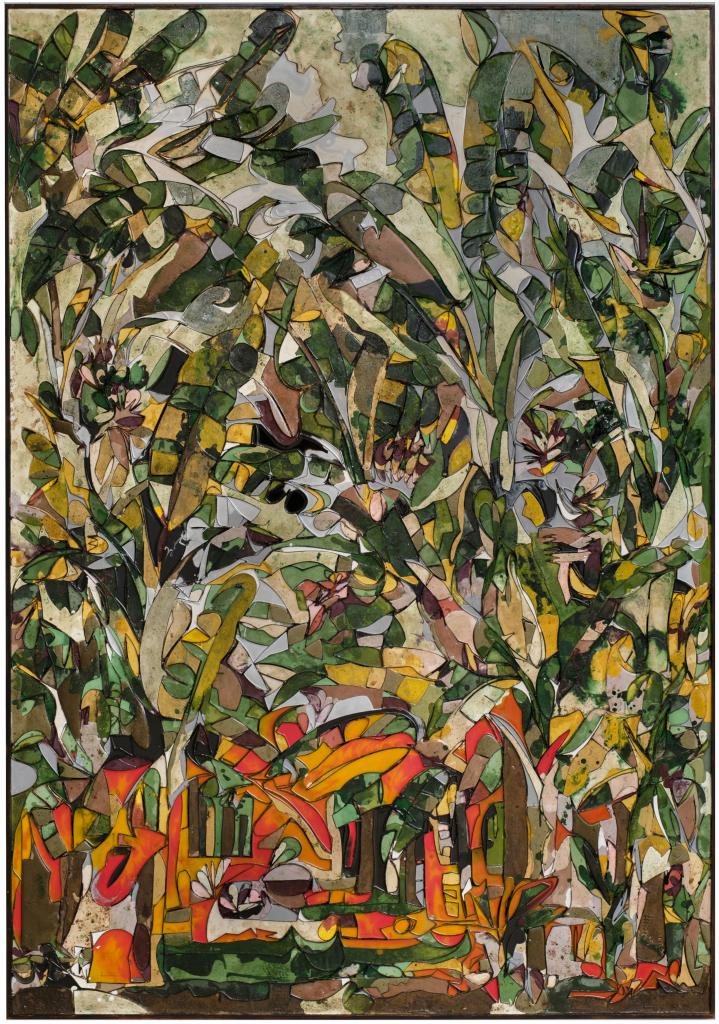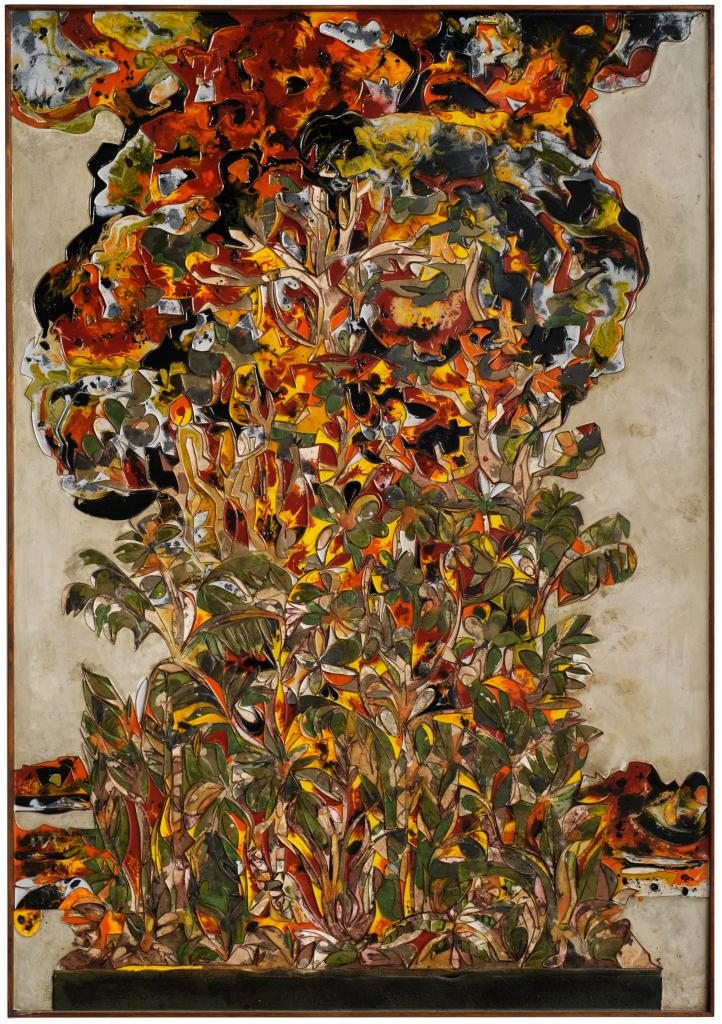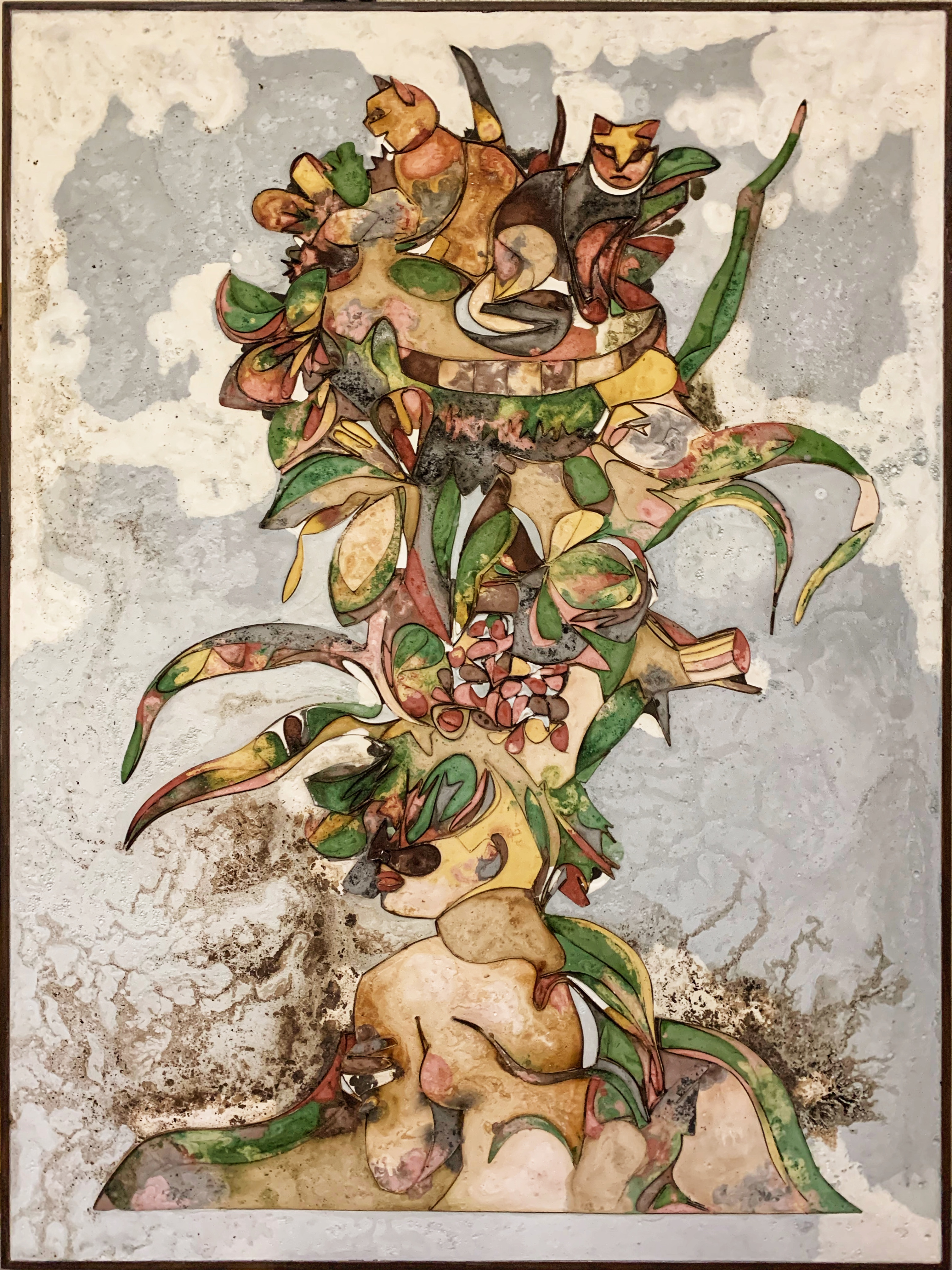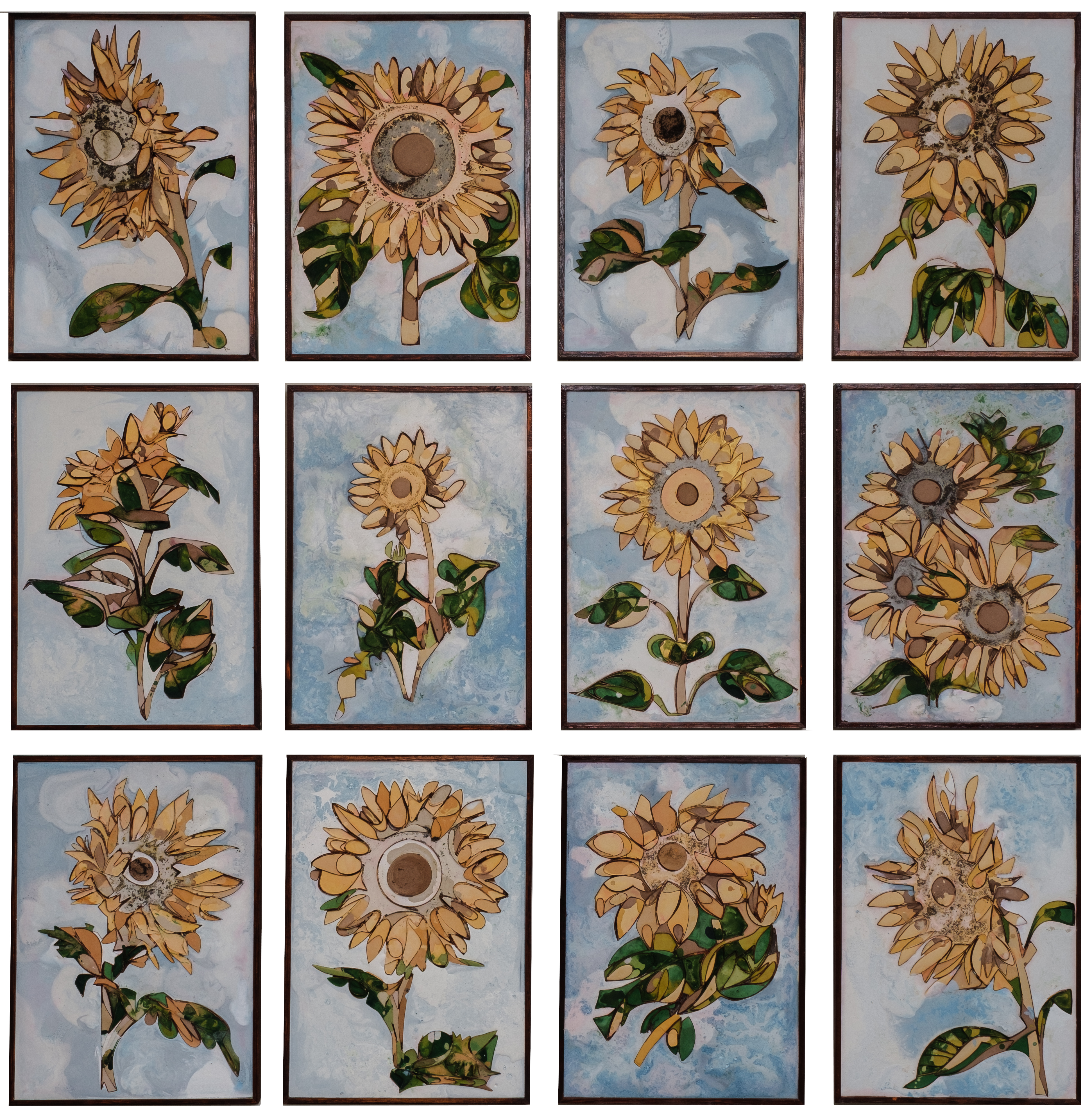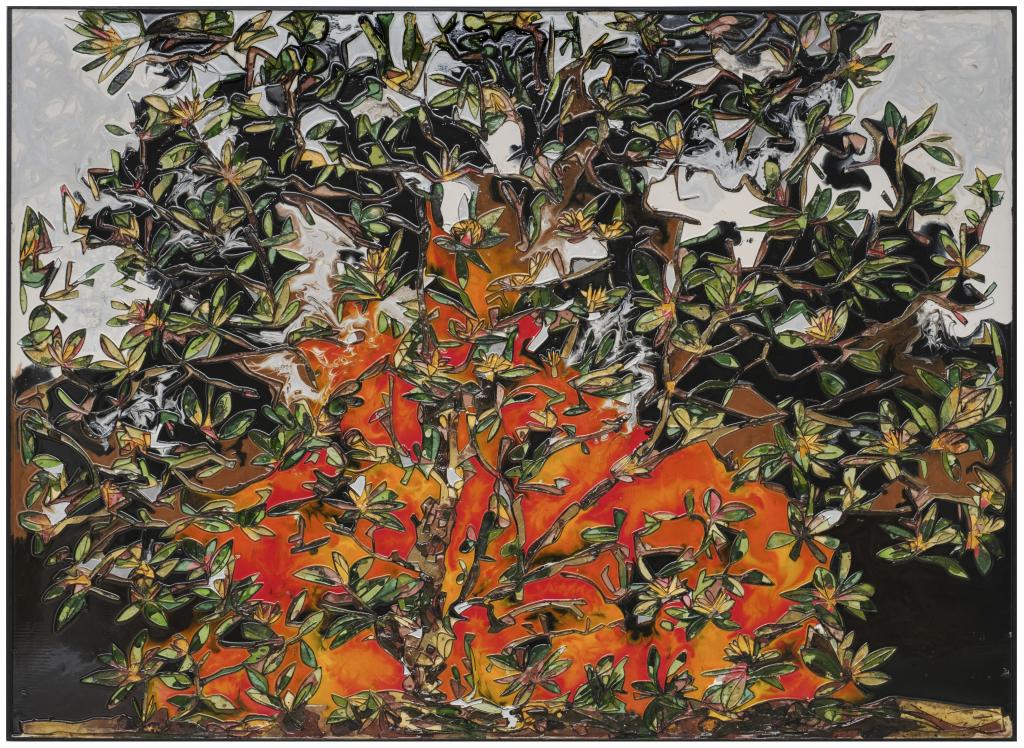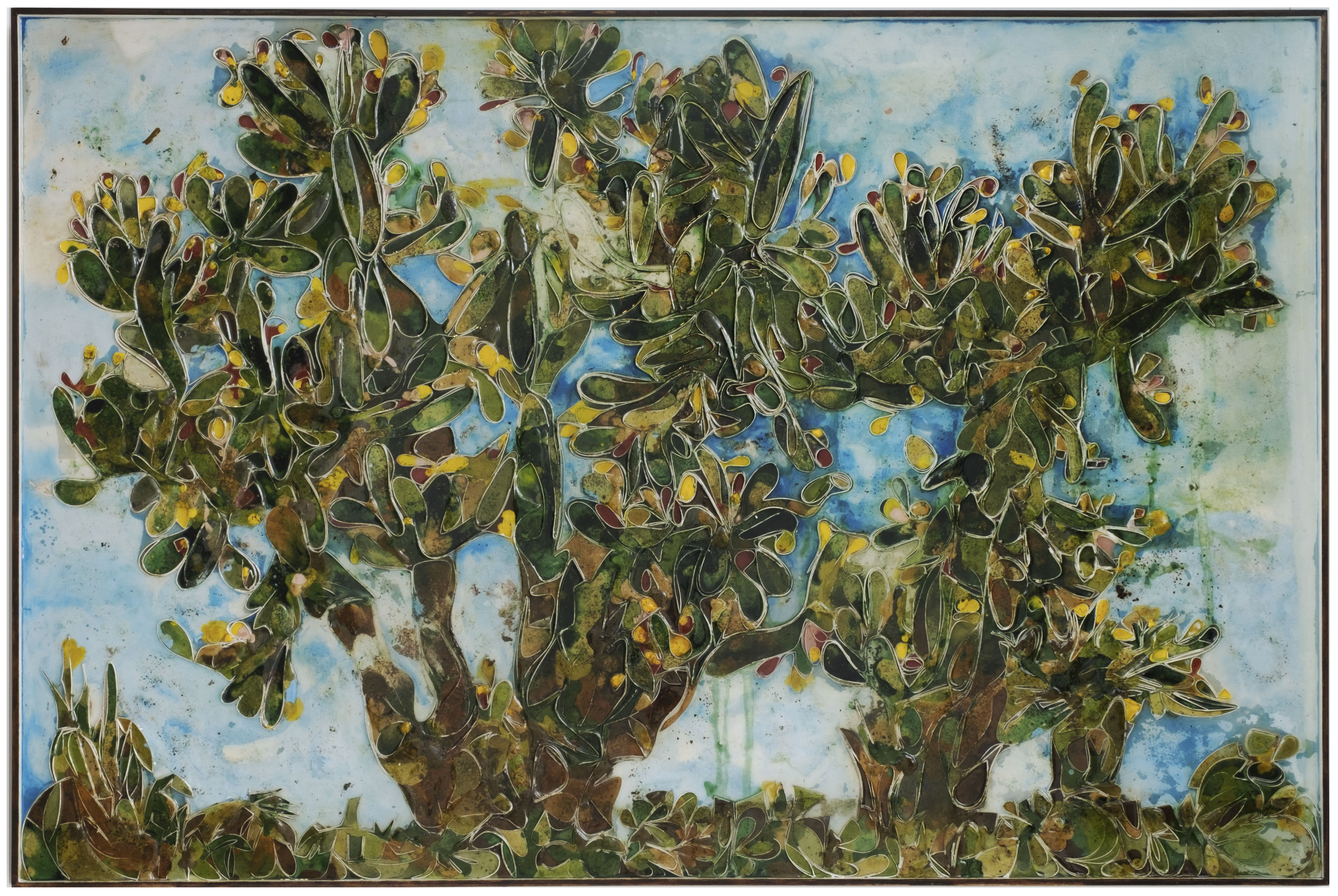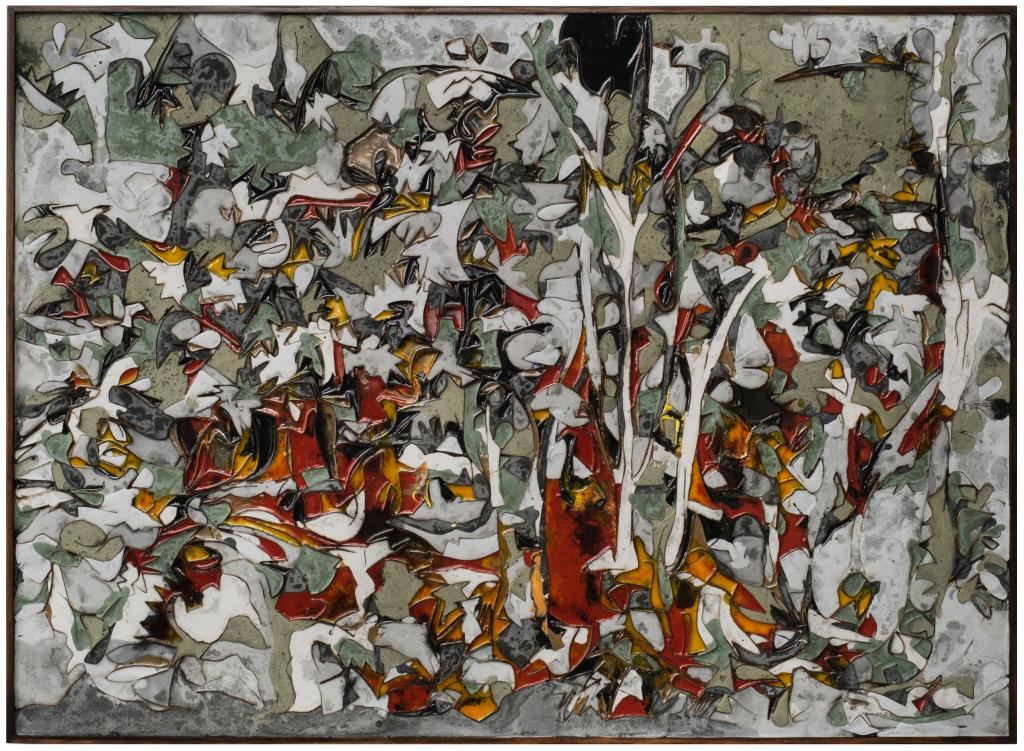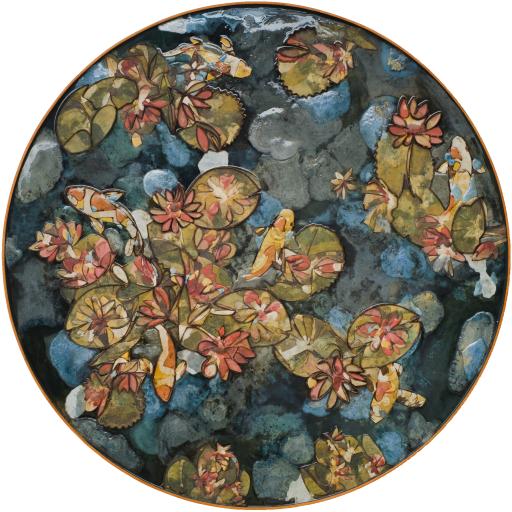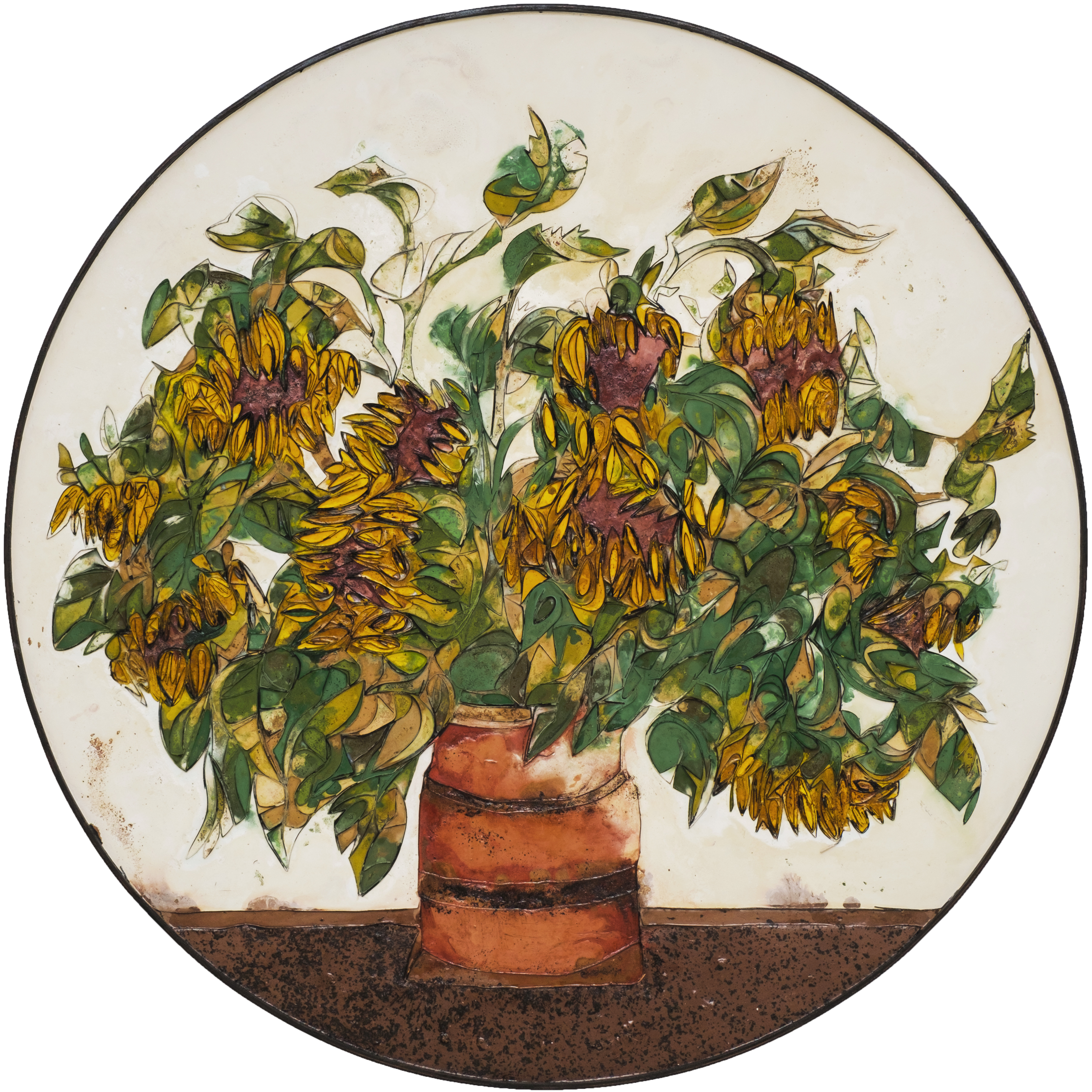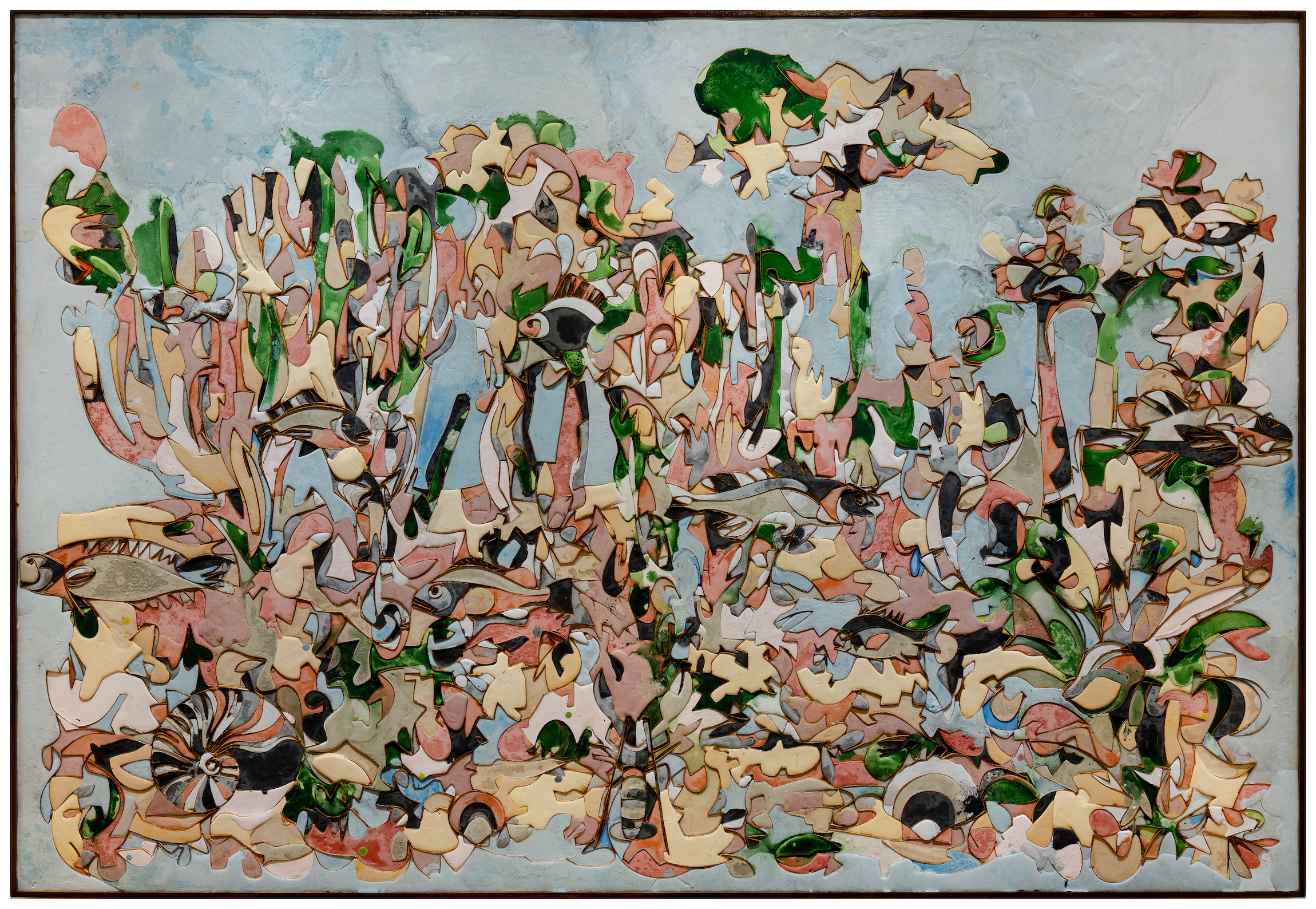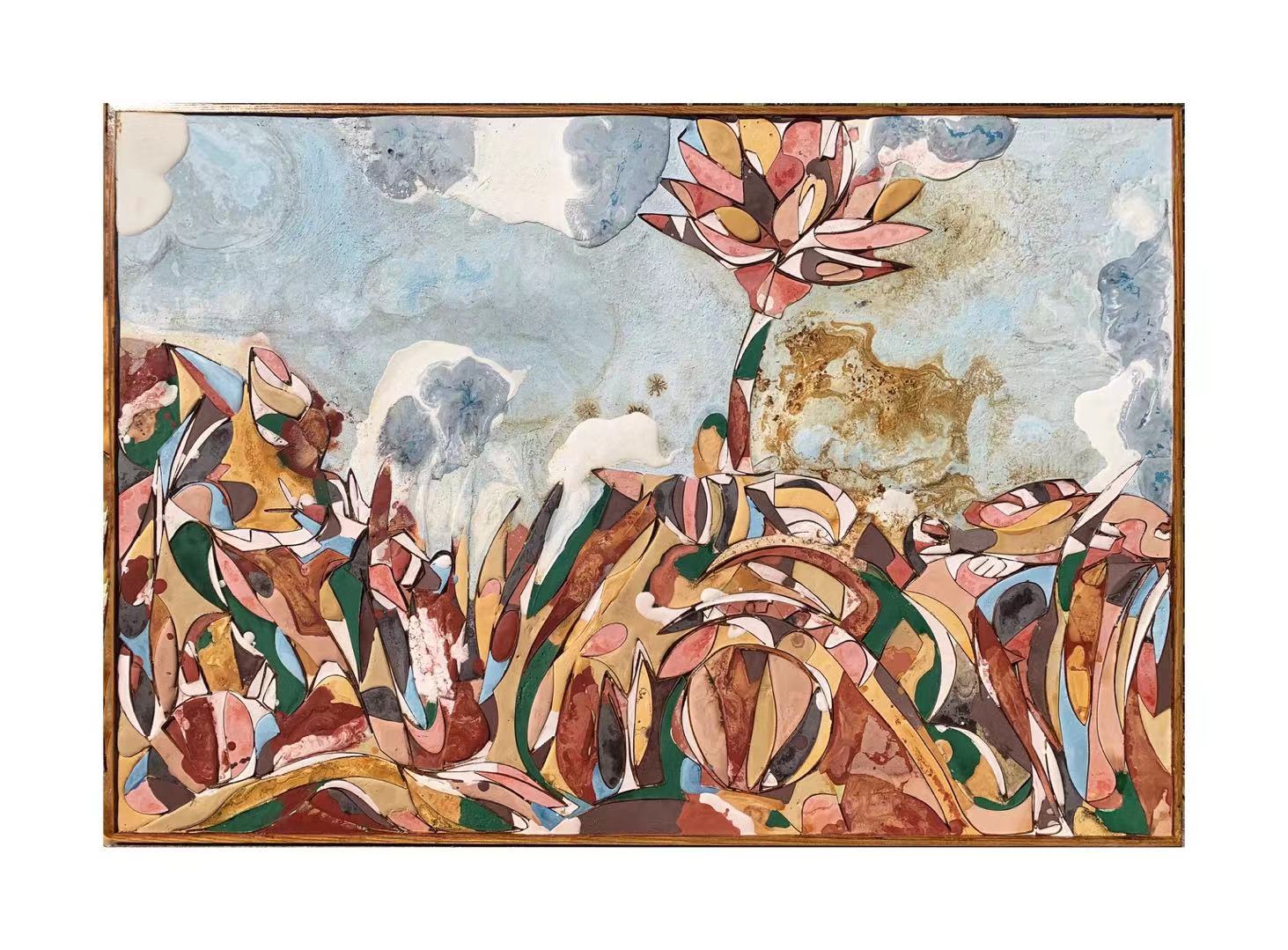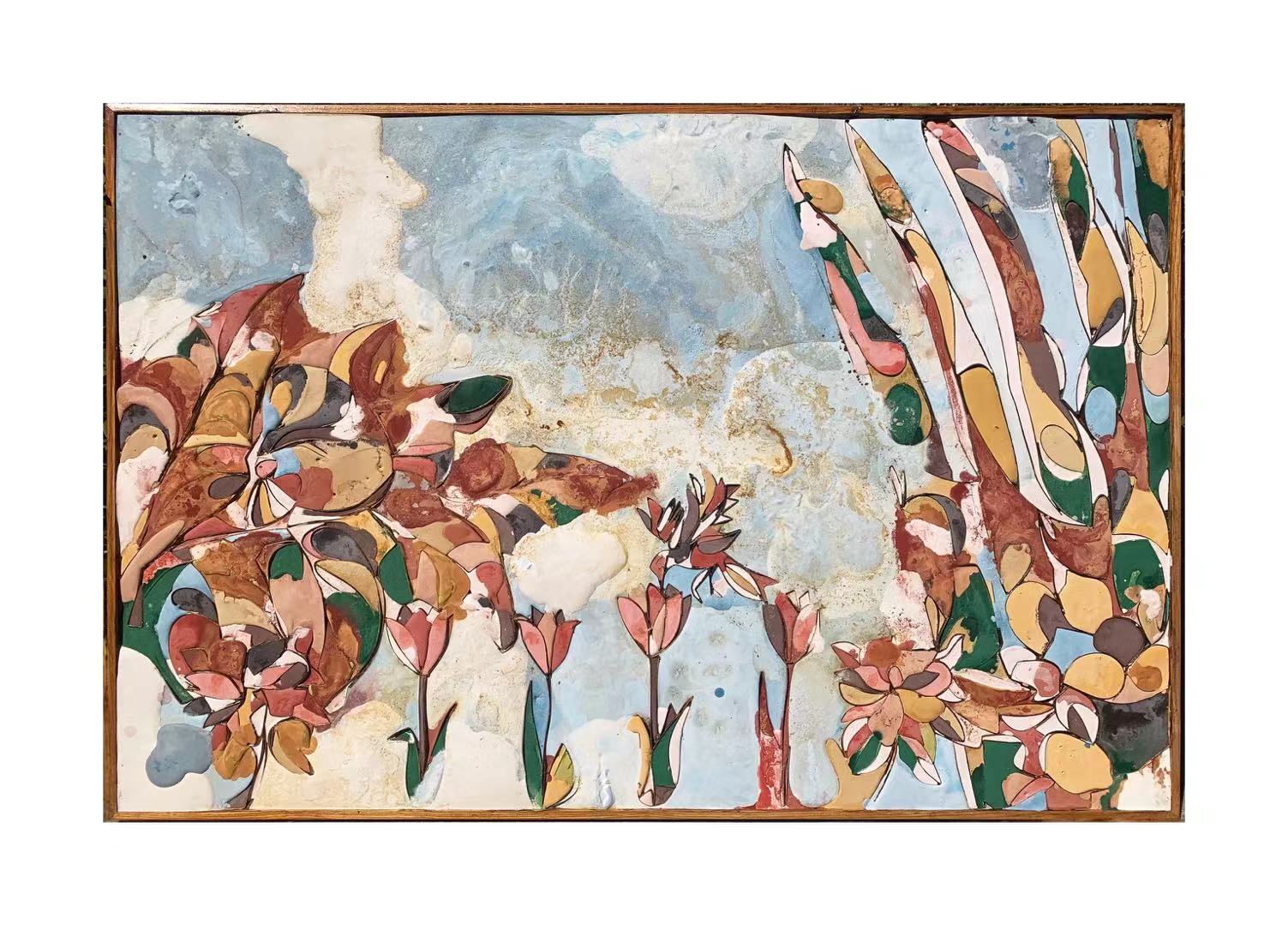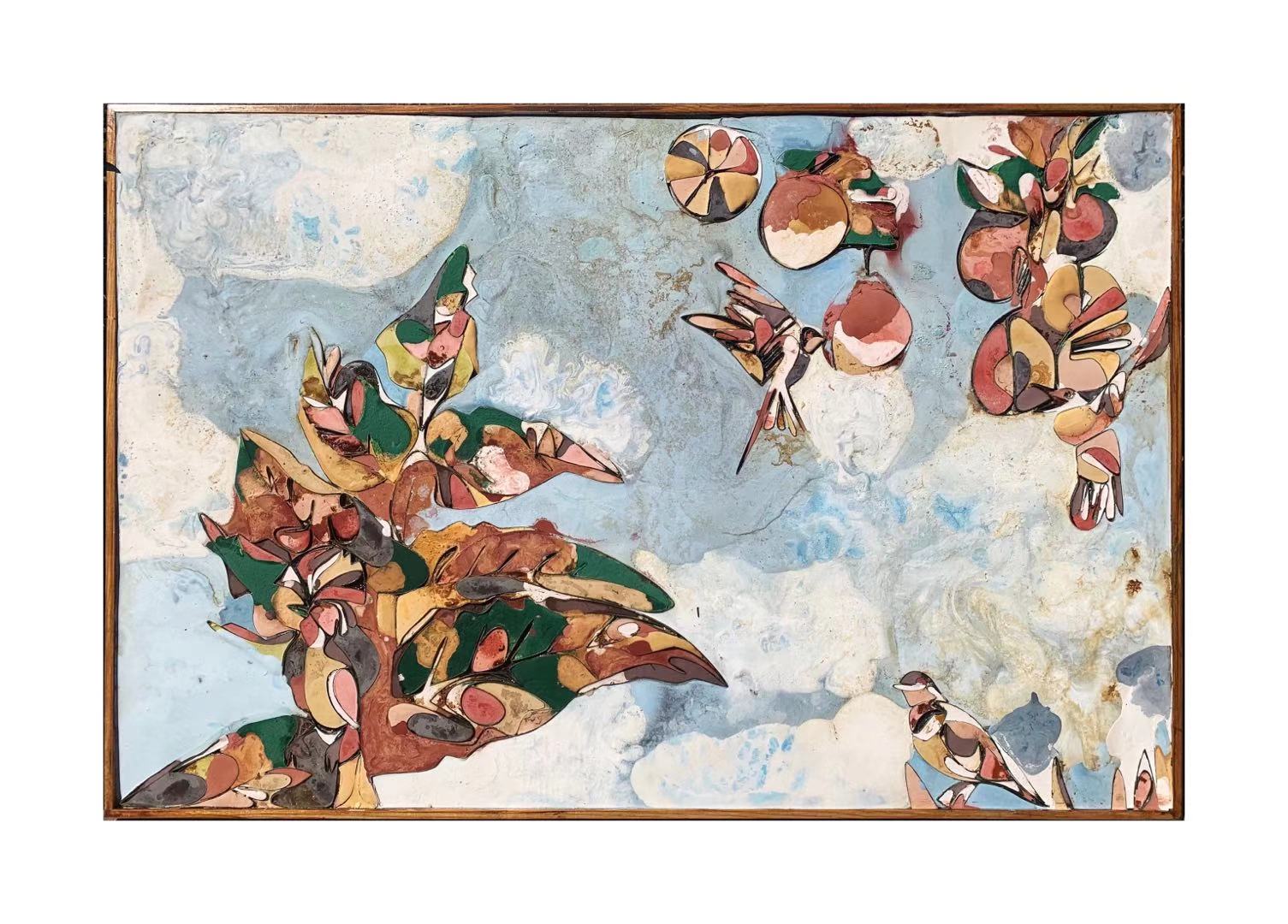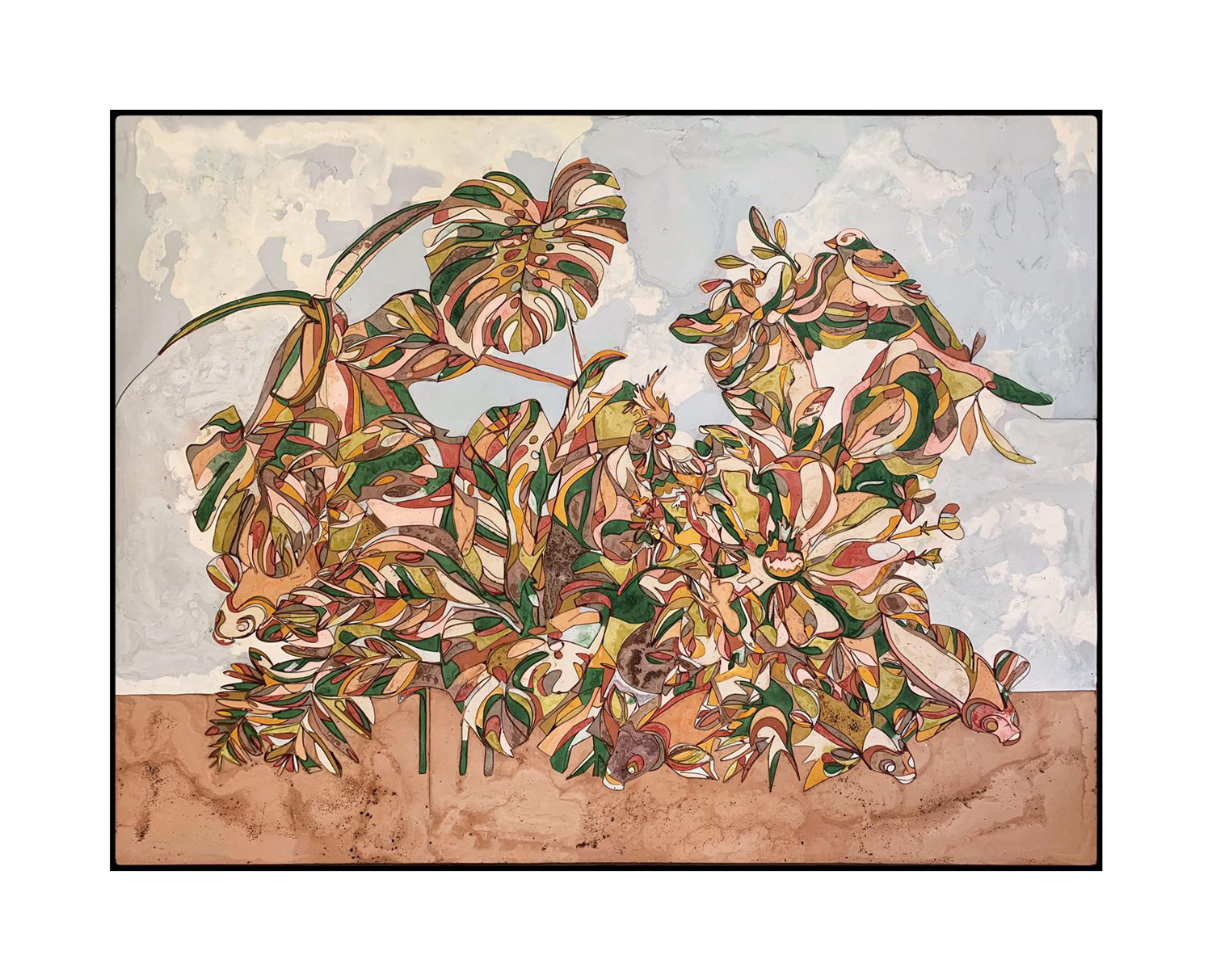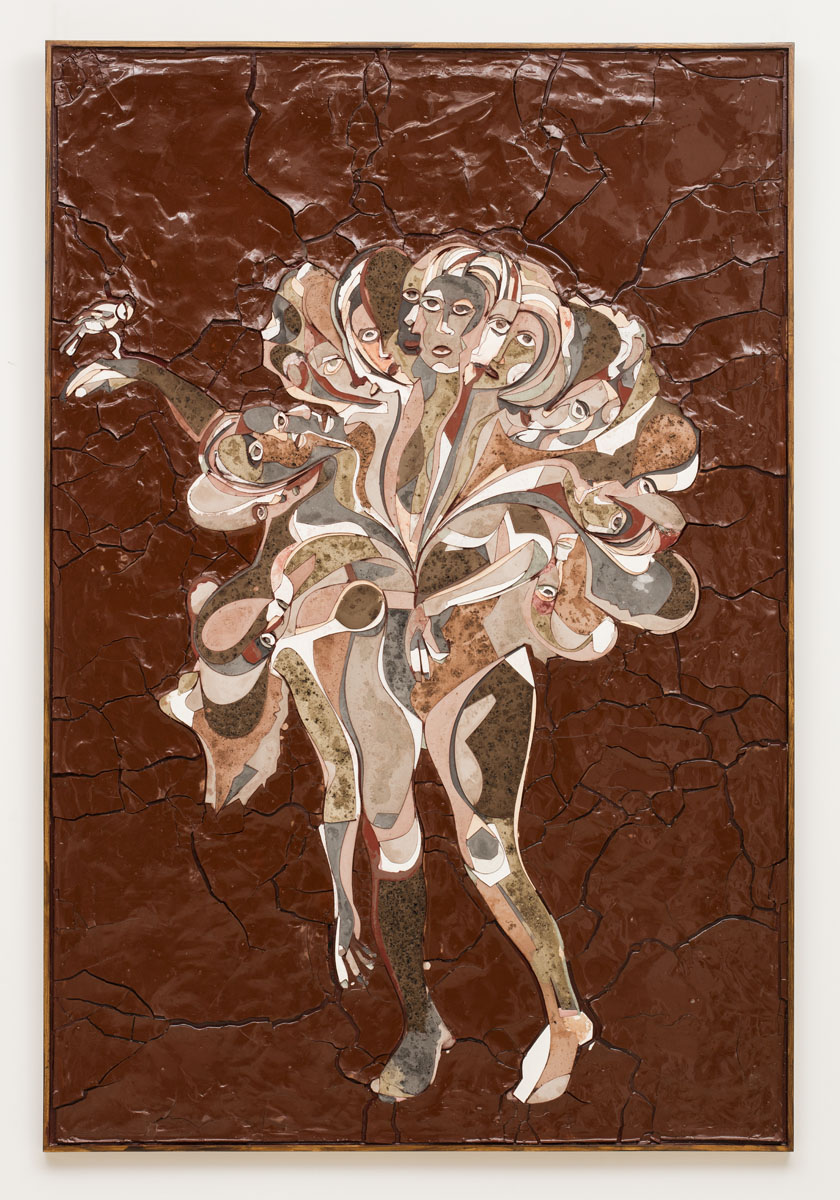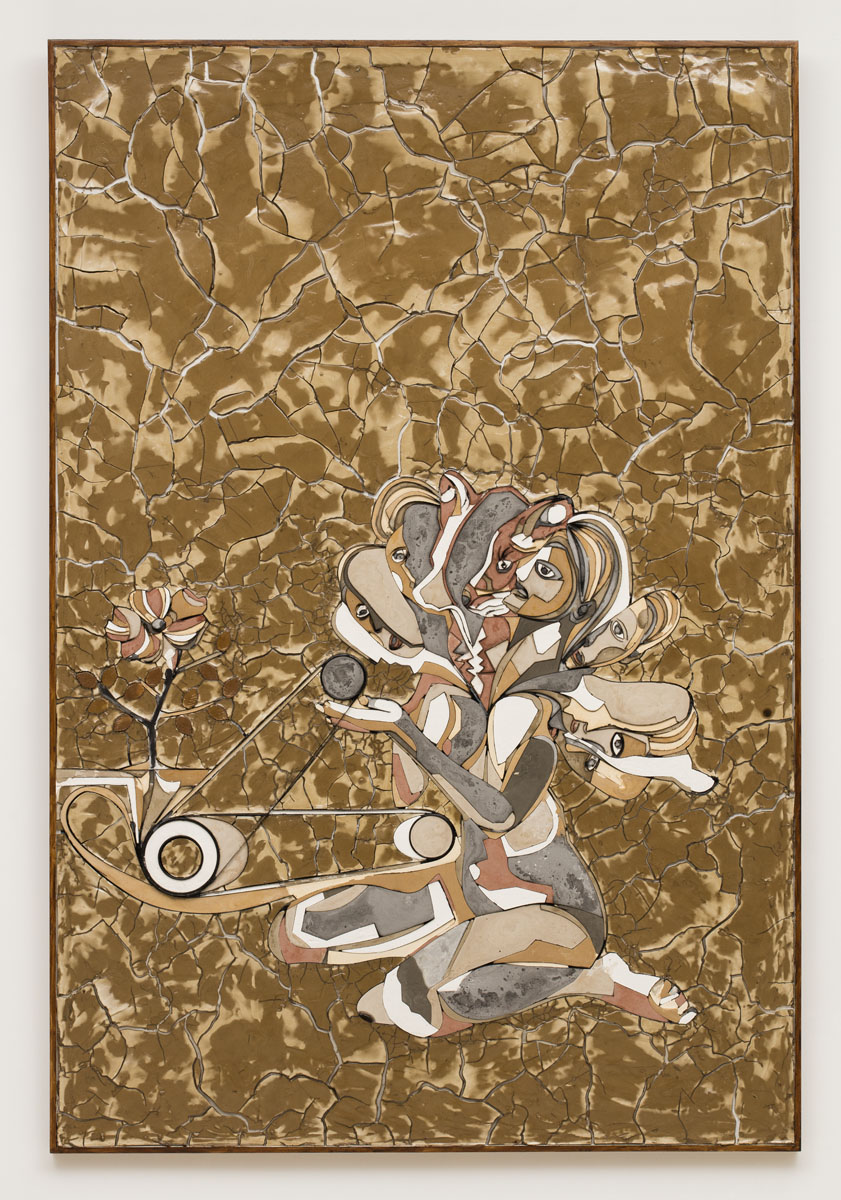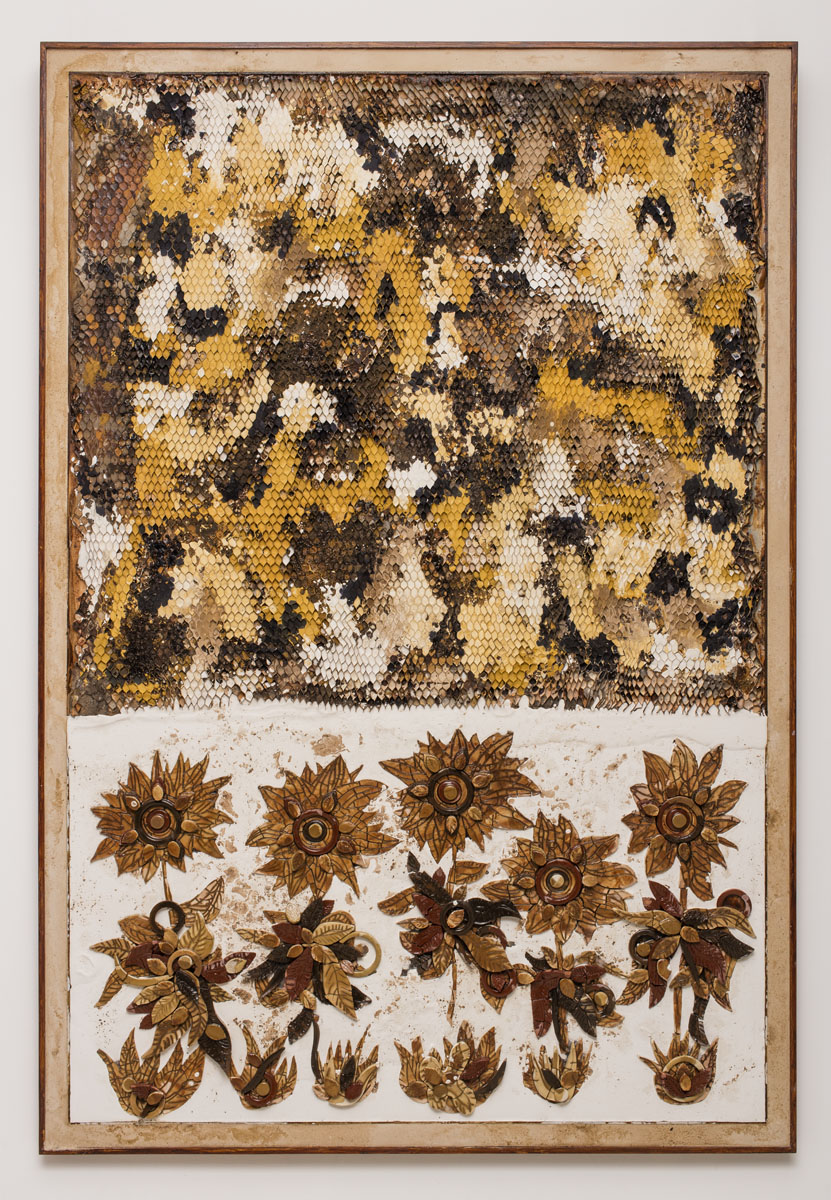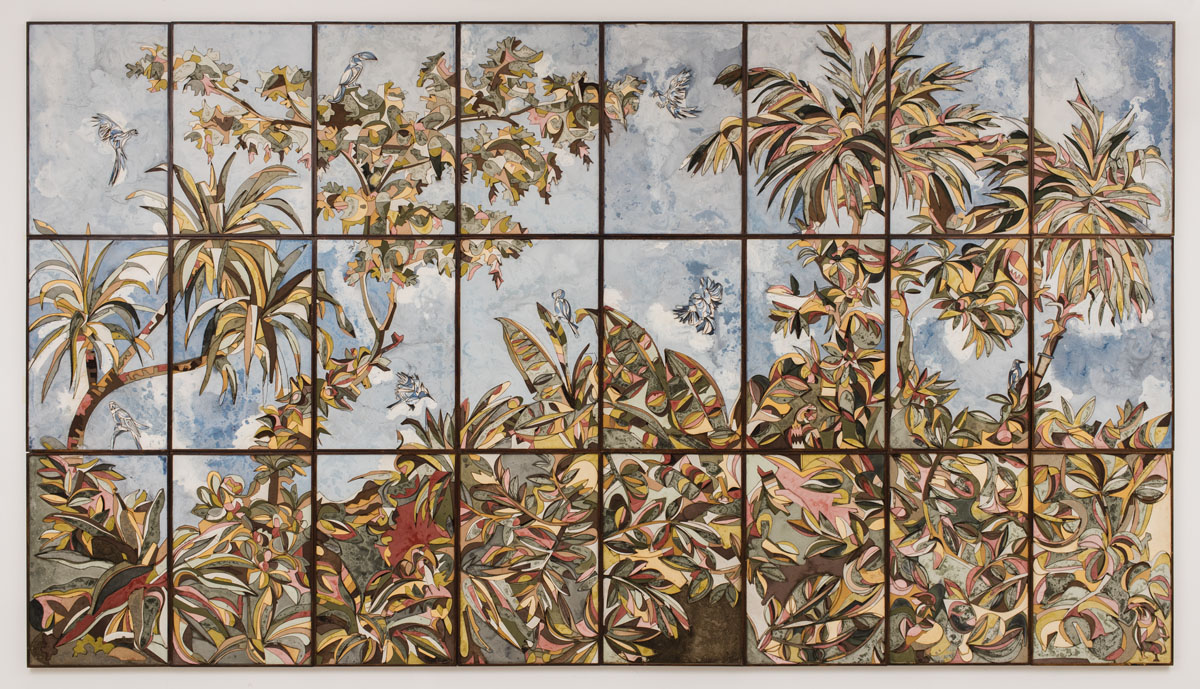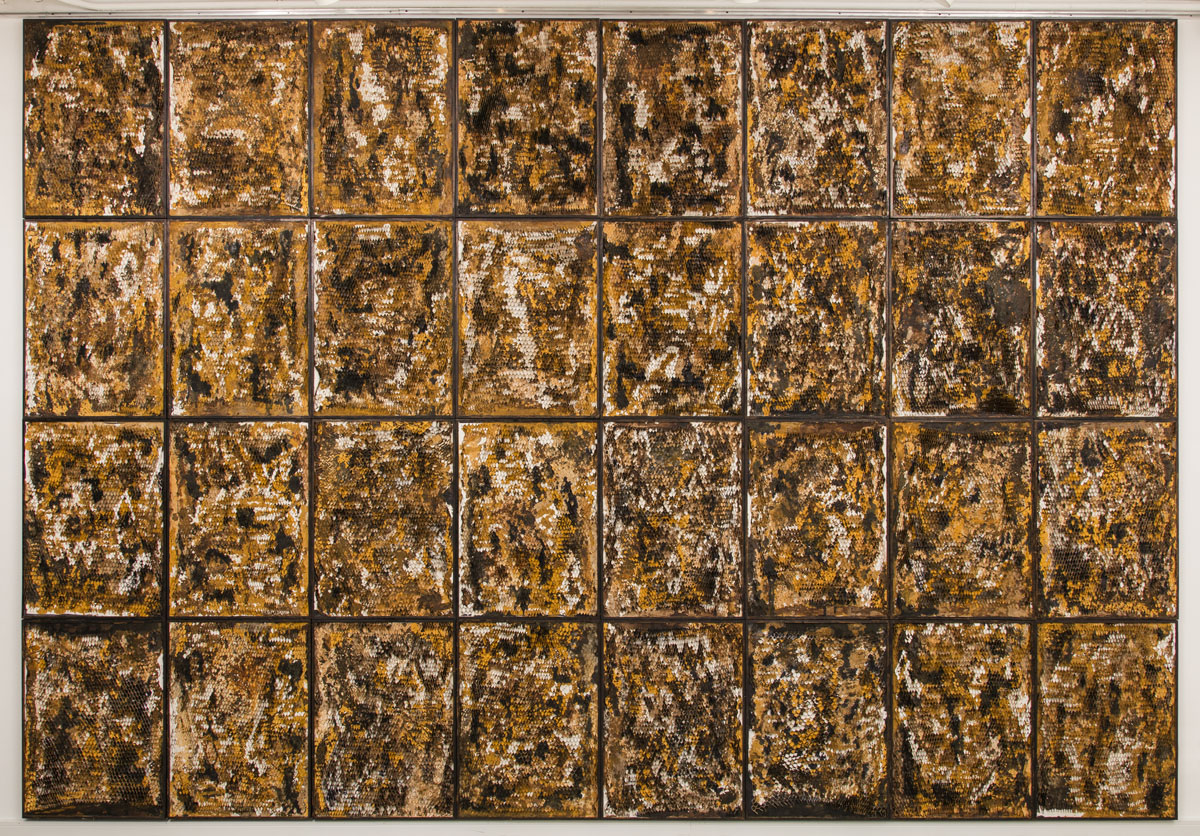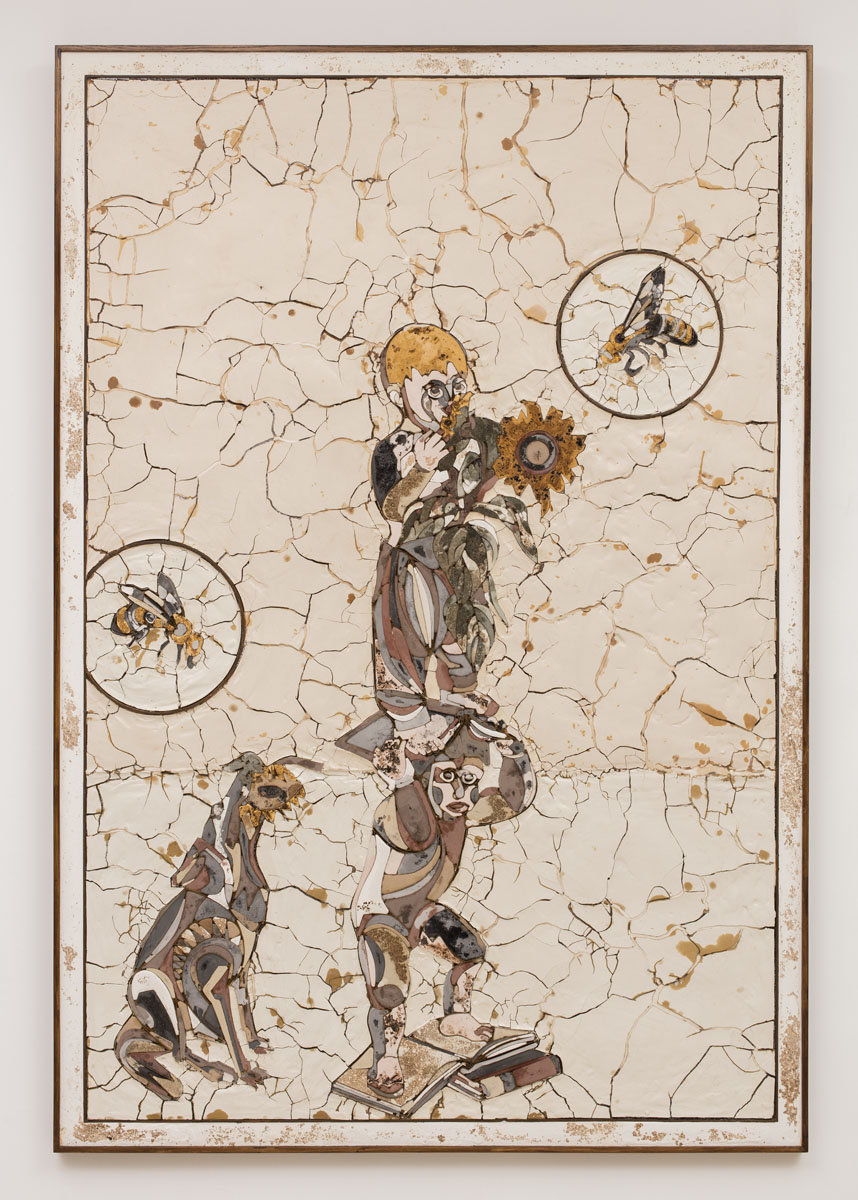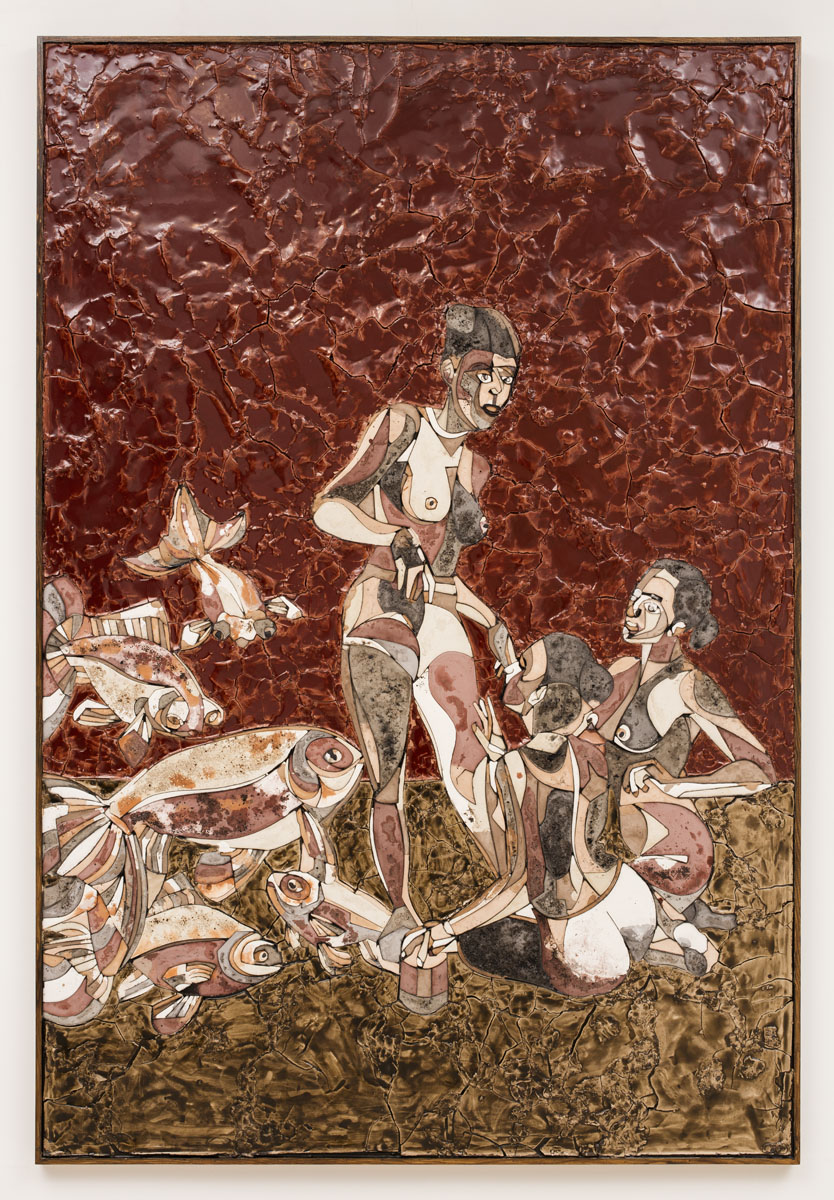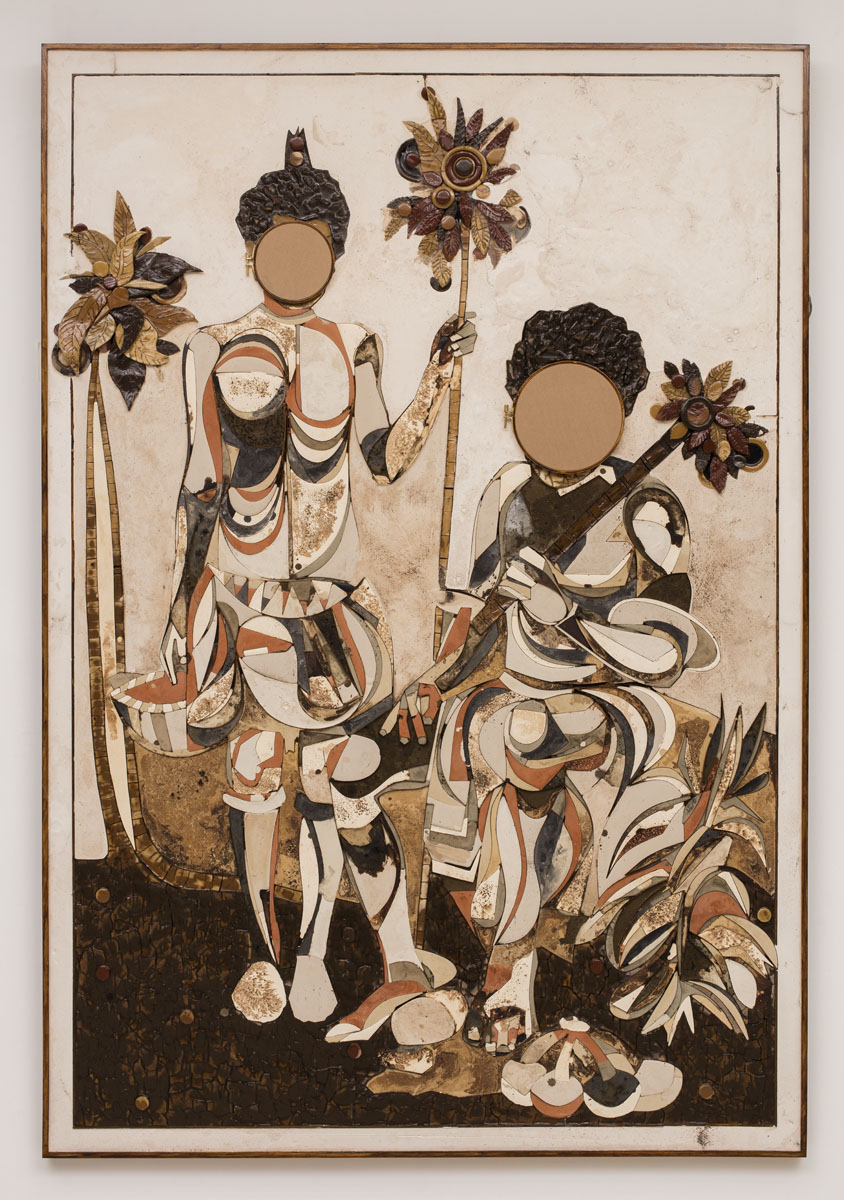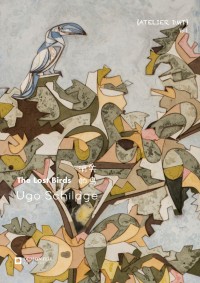Ugo Schildge (b.1987, Paris) graduated from The École nationale supérieure des Beaux-Arts in Paris in 2014. His work is mainly exhibited among Paris, Shanghai and the New York City.
A protégé of Giuseppe Penone during his schooling at the Beaux Arts, he developed a taste inspired by his master for natural and plantations. Ugo Schildge is an ecologist artist but not a claimant, whose vocation is expressed through a phantasmagorical look at flora and fauna.
Schildge has developed a new approach on wood panel with materials including but not limited to wood strips, natural pigments, plaster, which questions the traditional form of an artwork, blurring the border between painting and sculpture, canvas and media, control and freedom, and creating a perpetual come and go between figurative and abstract, conscious and unconscious, technique and illusion.
Besides artist residencies in Montreal, São Paulo, New York and Shanghai, Schildge’s work has been exhibited at public institutions including the GoodPlanet Foundation, Paris (permanent display since 2019); Invisible Dog Art Center, New York (2016); Espace Pierre Cardin, Paris (2014); École nationale supérieure des beaux-arts, Paris (2010), etc.
Ugo Schildge’s work has also been included in the collection of the GoodPlanet Foundation, Paris, France as well as private collections across Europe, America, and Asia.
A protégé of Giuseppe Penone during his schooling at the Beaux Arts, he developed a taste inspired by his master for natural and plantations. Ugo Schildge is an ecologist artist but not a claimant, whose vocation is expressed through a phantasmagorical look at flora and fauna.
Schildge has developed a new approach on wood panel with materials including but not limited to wood strips, natural pigments, plaster, which questions the traditional form of an artwork, blurring the border between painting and sculpture, canvas and media, control and freedom, and creating a perpetual come and go between figurative and abstract, conscious and unconscious, technique and illusion.
Besides artist residencies in Montreal, São Paulo, New York and Shanghai, Schildge’s work has been exhibited at public institutions including the GoodPlanet Foundation, Paris (permanent display since 2019); Invisible Dog Art Center, New York (2016); Espace Pierre Cardin, Paris (2014); École nationale supérieure des beaux-arts, Paris (2010), etc.
Ugo Schildge’s work has also been included in the collection of the GoodPlanet Foundation, Paris, France as well as private collections across Europe, America, and Asia.
